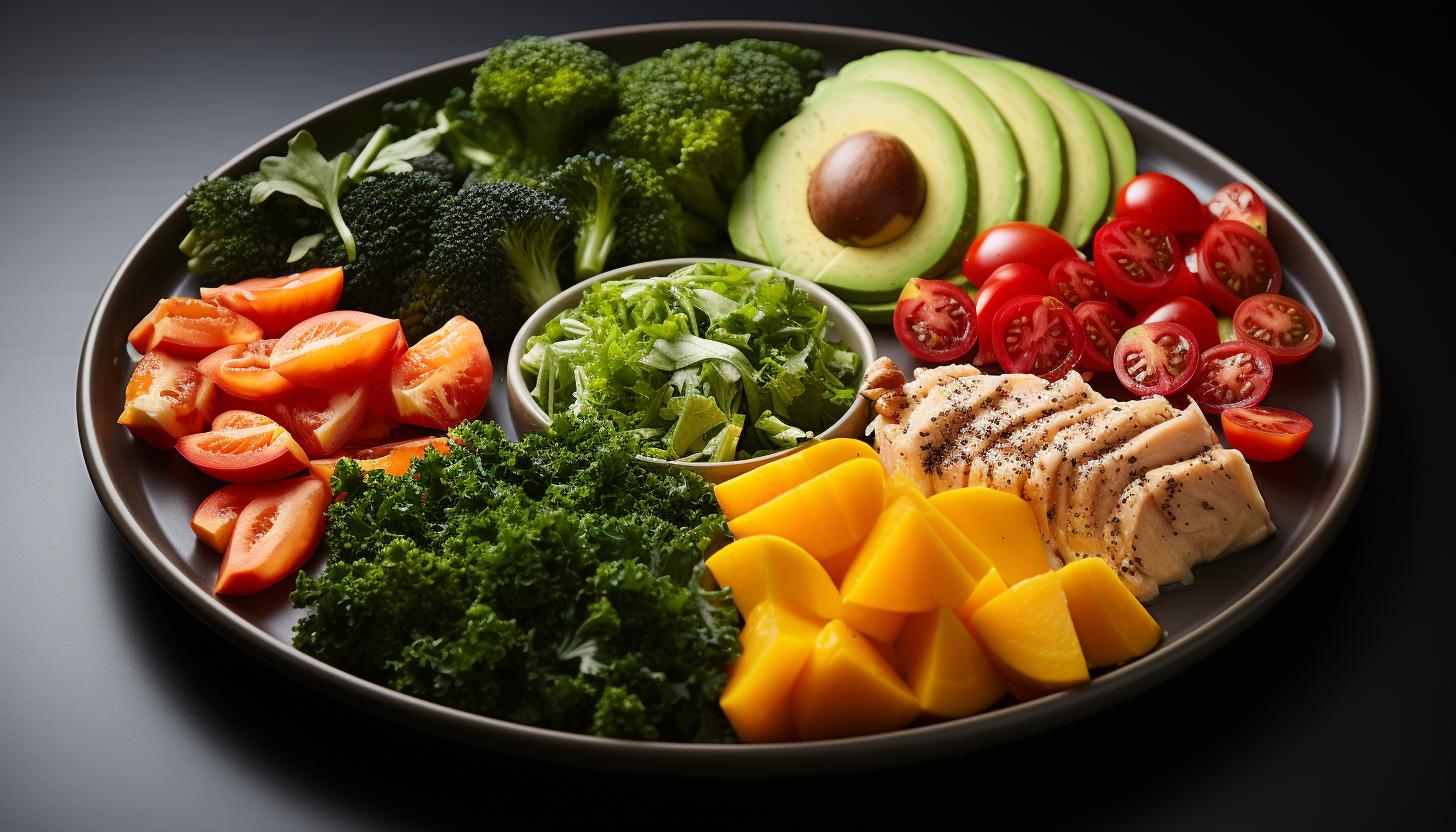Meal Planning for Weight Management: Portion Control and Macros

Are you struggling to manage your weight and maintain a healthy lifestyle? Look no further than meal planning for weight management.
In this article, we will explore the importance of portion control and macros, two key factors in achieving your fitness goals. By understanding how much you eat and the balance of nutrients in your diet, you can take control of your health.
Get ready to embark on a journey towards a well-balanced and sustainable eating plan that will help you achieve lasting results.
The Importance of Portion Control

Portion control is crucial when trying to manage weight, as it helps regulate calorie intake. Understanding the psychology behind portion control can be helpful in achieving your weight management goals. Research has shown that people tend to eat more when presented with larger portion sizes, regardless of hunger levels. By practicing portion control, you can prevent overeating and maintain a healthy weight.
There are several effective portion control tools and techniques that can assist you in managing your food intake. One popular tool is using smaller plates and bowls to create an illusion of a full plate, which can help reduce the amount of food consumed. Another technique is measuring out your portions using measuring cups or a food scale, ensuring accurate serving sizes.
Additionally, paying attention to hunger cues and eating slowly can also aid in portion control. It takes approximately 20 minutes for our brain to register feelings of fullness, so taking your time while eating allows your body to recognize when it’s satisfied.
Understanding Macronutrients for Weight Management

Understanding macros is essential for effectively managing your weight. Macronutrients, also known as macros, are the three main nutrients that make up our diet: carbohydrates, proteins, and fats. Each macronutrient plays a crucial role in our body’s functions and has different effects on weight management.
To help you better understand the role of each macronutrient in weight management, let’s break it down in a table:
| Macronutrient | Calories per gram | Role in Weight Management |
|---|---|---|
| Carbohydrates | 4 calories/g | Provide energy |
| Proteins | 4 calories/g | Build and repair tissues |
| Fats | 9 calories/g | Aid in nutrient absorption |
Now that we have a clearer picture of each macronutrient’s calorie content and role, we can discuss how nutrient timing and exercise come into play.
Nutrient timing refers to when you consume certain macronutrients throughout the day to optimize weight management. For example, consuming a higher amount of carbohydrates before exercising can provide fuel for your workout. On the other hand, having protein-rich meals post-workout can aid in muscle recovery and growth.
Exercise plays an important role in macronutrient utilization. Regular physical activity increases your body’s need for energy (calories) which primarily comes from carbohydrates. Additionally, resistance training helps build lean muscle mass which requires adequate protein intake.
How to Calculate Your Ideal Caloric Intake

To accurately determine your ideal caloric intake, it’s important to calculate the number of calories you need each day. Determining your daily energy needs is influenced by various factors. These factors include your age, gender, weight, height, activity level, and overall health goals.
To estimate your caloric intake, you can use a formula called the Harris-Benedict equation. This equation takes into account your basal metabolic rate (BMR), which is the number of calories your body needs at rest. The BMR calculation considers factors such as age, weight, height, and gender.
Once you have calculated your BMR, you can then factor in your activity level to determine your total daily energy expenditure (TDEE). This will give you an estimate of how many calories you burn throughout the day based on physical activity.
It’s important to note that these calculations provide estimates and may not be 100% accurate for everyone. Factors such as genetics and individual metabolism can also influence caloric intake estimation.
In addition to calculating your caloric intake, it’s essential to listen to your body’s hunger and fullness cues. Pay attention to how different foods make you feel and adjust accordingly. Consulting with a registered dietitian or nutritionist can also provide personalized guidance in determining your ideal caloric intake for weight management or other health goals.
Smart Strategies for Meal Prepping

When it comes to smart strategies for meal prepping, you can save time and make healthier choices by batch-cooking your meals in advance. Planning and preparing your meals ahead of time not only helps you stay on track with your healthy eating goals but also saves you from the stress of having to figure out what to cook every day.
To make the most out of your meal prep, here are some time-saving tips and healthy and balanced meal ideas.
Firstly, invest in quality storage containers that are both microwave-safe and freezer-friendly. This will help keep your meals fresh and easily accessible throughout the week.
Secondly, choose recipes that can be easily scaled up or down so that you can prepare larger batches without getting bored of eating the same thing every day.
Some healthy and balanced meal ideas for meal prepping include:
– Grilled chicken breast with roasted vegetables
– Quinoa salad with mixed greens, chickpeas, tomatoes, cucumbers, and feta cheese
– Salmon fillets with steamed broccoli and brown rice
– Tofu stir-fry with a variety of colorful vegetables served over whole wheat noodles.
Incorporating Portion Control and Macros Into Your Daily Routine

Incorporating portion control and tracking macros can help you make more informed choices about your daily meals. Balancing macros is essential for muscle gain, as each macronutrient plays a specific role in supporting your fitness goals. By understanding the importance of portion control, you can also achieve weight loss success.
Tracking your macros involves monitoring the amount of protein, carbohydrates, and fats you consume each day. This practice helps you ensure that you are getting the right balance of nutrients to support muscle growth and recovery. To visualize how macro tracking works, take a look at the table below:
| Macronutrient | Calories per Gram | Recommended Daily Intake |
| Protein | 4 | 20-30% of total calories |
| Carbohydrates | 4 | 45-65% of total calories |
| Fats | 9 | 20-35% of total calories |
Pairing macro tracking with portion control allows you to manage your calorie intake effectively. By controlling the size of your meals and snacks, you can create a calorie deficit necessary for weight loss. It’s important to remember that portion sizes vary depending on individual factors such as age, gender, and activity level.
Conclusion
In conclusion, mastering portion control and understanding macros is the key to successful weight management.
By visualizing your plate as a canvas, you can create a masterpiece of balanced meals that nourish your body and support your goals.
Just like an artist carefully selects their colors and brush strokes, you have the power to choose nutritious foods in the right amounts to create a harmonious balance in your diet.
With proper meal planning and preparation, you can achieve lasting results and enjoy a healthy lifestyle for years to come.






